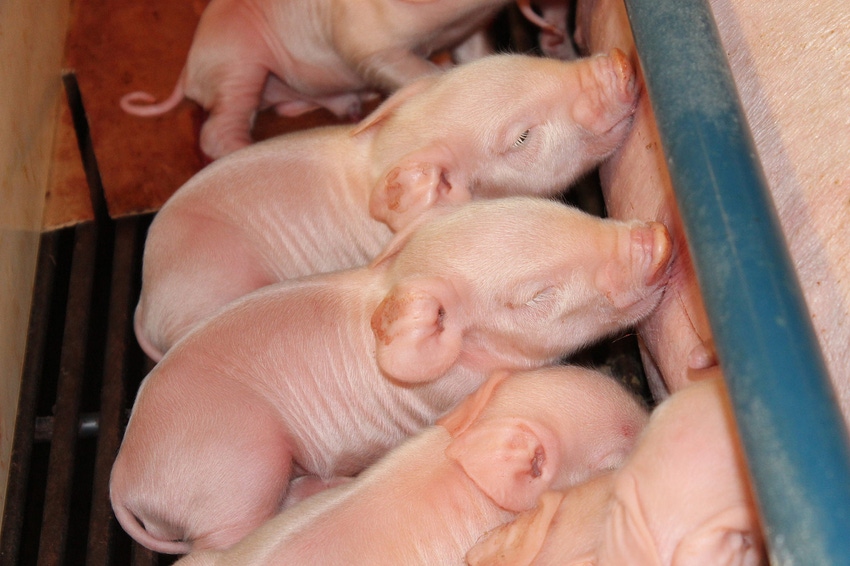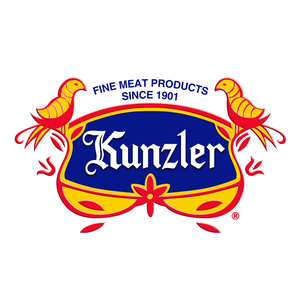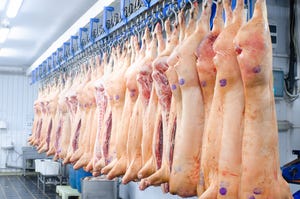Farrowing display: An Iowa State Fair must-see for 25-plus years
New in 2019, the Swine Medicine Education Center in Ames provided supervision for the display.
February 26, 2020

Witnessing the birth of pigs helps thousands of consumers connect firsthand with the animals and farmers during the Iowa State Fair in Des Moines.
At an average viewing rate of about 1,000 per hour, people of all ages crowded around the swine farrowing display at the Paul R. Knapp Animal Learning Center during the 2019 Iowa State Fair. Joyce Hoppes, consumer information director for Iowa Pork Producers Association, said there's never a dull moment in that area of the building, thanks to the excitement that accompanies the birthing of piglets.
"It has become a must-see display for so many fair-goers," she says.
People from all over the nation come to these displays to gain personal experience with farrowing. For some, it is their first interaction with animal agriculture and they experience it in a real-life setting, Hoppes says.
"This display gives the public an opportunity to engage with pork producers and to get answers to questions they might have about modern pork production," she says.
Eight large, individual stalls line the back of the center, each with a sow ready to farrow at some point during the 11-day run of the fair. For many years, sows have been bred and provided by the Dale "Butch" Sleezer family, who farm near Aurelia.
Part of Iowa State Fair for more than 25 years
Of the more than 100,000 fairgoers who visited the display in 2019, it's likely that almost none knew the story and history behind the display.
The first farrowing display at the Iowa State Fair was in 1991, located in the Swine Barn near the Big Boar display. At that time, IPPA partnered with Kirkwood Community College for students there to provide care for the sows and piglets born during the fair.
When plans for the Animal Learning Center came about, Hoppes said IPPA knew it would be good to relocate the display to allow for more space and better climate control for the sows and piglets, along with an opportunity to reach more fairgoers. From their very beginning, these displays have been innovative by allowing the general public to learn about one of Iowa's largest agricultural sectors - pork production.
People make the display work
Faculty, staff and students from Iowa State University's College of Veterinary Medicine are on-site throughout the fair to ensure appropriate and timely care to all animals. Besides allowing immediate assistance as necessary with health, medical and environmental issues, this staffing offers firsthand experience in large animal veterinary care for the students.
New in 2019, the Swine Medicine Education Center in Ames provided supervision for the display. SMEC program coordinator Kristin Skoland said the Center's veterinarians viewed this opportunity as "the perfect collaborative effort between SMEC, IPPA and the Iowa State Fair veterinarians to provide medical support for the farrowing display to ensure appropriate health and welfare for the animals at the display."
Through this collaboration, ISU vet students are able to work directly with veterinarians who specialize in swine medicine. Together, they provide high-quality care and around-the-clock supervision of the pigs.
In addition to the veterinarians and vet students, Southeast Polk FFA members, based in Pleasant Hill, also care for the animals. Many of these students are interested in animal science and use the Animal Learning Center experience to prepare themselves for college.
After the fair ends, the sows and piglets are donated to FFA programs and FFA students for continued learning experiences and Supervised Agricultural Experience projects.
Alex Huberty is one of the FFA members to receive a sow and litter. The litter he received was intended to be his SAE project, but he recognized that other kids should benefit from the opportunity. He chose to share some of the piglets with other Southeast Polk FFA students with their own small-scale swine projects. Eventually, multiple students from Southeast Polk High School and Southeast Polk FFA were in charge of their own small operations."The sows and piglets have taught us a lot," Huberty says. "They've taught us life lessons and just what it means to raise livestock."
Although the initial intent of the displays was "to give the general public an opportunity to learn about pork production and see firsthand one segment … farrowing," Hoppes says it's easy to see that the display has accomplished far more.
The animals provide agricultural learning experiences for people who are not involved in agriculture. They allow veterinary students to gain direct experience caring for swine. And they provide hands-on learning opportunities for high school students who want to go into the pork industry.
Source: Iowa Pork Industry Center, which is solely responsible for the information provided, and wholly owns the information. Informa Business Media and all its subsidiaries are not responsible for any of the content contained in this information asset.
You May Also Like
.png?width=300&auto=webp&quality=80&disable=upscale)


